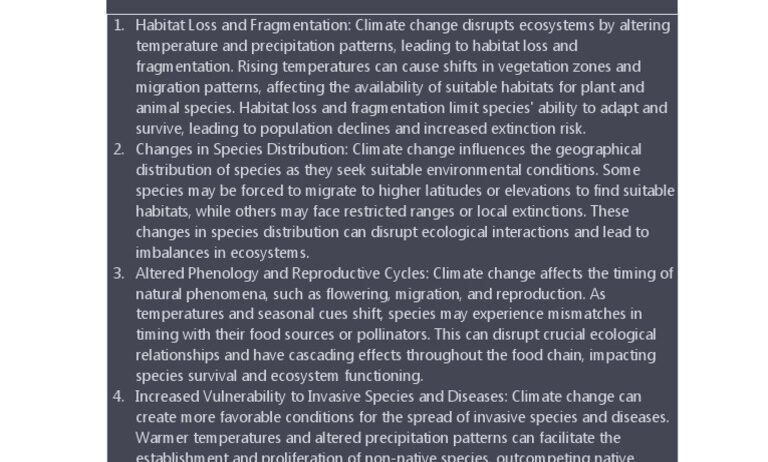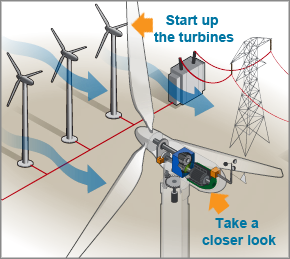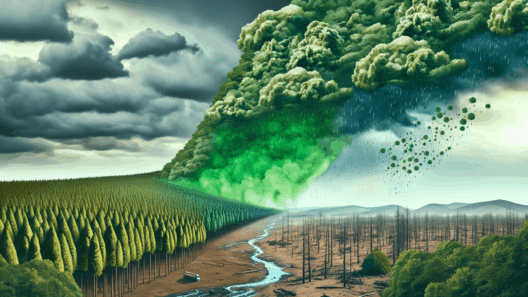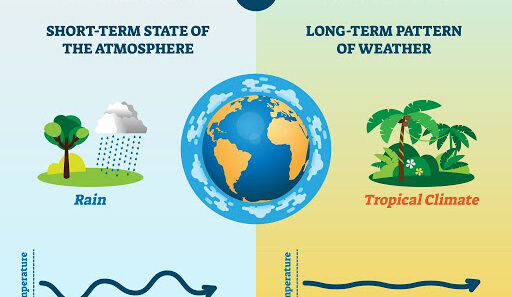The intricate web of life on our planet is increasingly threatened by climate change, a phenomenon that manifests in various forms, from rising temperatures to shifting precipitation patterns. The implications for biodiversity—a term that encompasses the variety of life forms and their ecological interactions—are profound and multifaceted. This article explores how climate change impacts biodiversity, detailing the specific mechanisms through which these changes occur and their cascading effects on ecosystems.
Understanding the relationship between climate change and biodiversity is crucial for fostering effective conservation efforts and enhancing ecosystem resilience. We will delve into the mechanisms by which climate change affects different species, the resulting consequences for ecosystems, and the importance of preserving biodiversity in an ever-evolving climate.
Shifts in Habitats: The Changing Landscapes of Life
One of the most immediate effects of climate change is the alteration of habitats. As temperatures rise, many species are forced to migrate to cooler areas, often towards poles or higher altitudes. This migration can disrupt existing ecosystems. For instance, alpine species may find their suitable habitat dwindling as mountains warm, leading to potential extinction if they cannot move to preferable climates.
Changes in precipitation patterns can also lead to habitat destruction. Increased rainfall may cause flooding in wetlands, while droughts can desiccate grasslands and forests. These abrupt changes can impose stress not only on vegetation but also on the myriad species that depend on these habitats for sustenance and shelter. As these habitats turn inhospitable, the delicate balances of these ecosystems face unprecedented challenges.
Species Interactions: The Ripple Effects of Disruption
The impacts of climate change on biodiversity extend beyond mere habitat transformation. Species interactions—such as predation, competition, and symbiosis—can be severely disrupted. For instance, the phenology, or the timing of biological events, of many species is becoming misaligned due to temperature fluctuations. This may cause predators and prey to become out of sync, leading to declines in prey populations when predators are unable to find sufficient food.
Moreover, invasive species often thrive under changing climatic conditions, outcompeting native species that are less adaptable. These invaders can alter nutrient cycling and other critical ecosystem functions, leading to further biodiversity loss. The introduction of new species can trigger native species extinction, unbalancing the delicate ecosystems in which they once thrived.
Furthermore, shifting climatic zones can create new opportunities for some species while extinguishing others. For example, warmer temperatures may favor certain pests that can decimate local vegetation, threatening the species that depend on those plants, such as herbivores and their predators.
Ecosystem Services: The Price of Biodiversity Loss
Understanding the impacts of climate change on biodiversity is essential not just for conservationists but for all of humanity since biodiversity underpins numerous ecosystem services that are vital for our survival. These services range from food production to water purification, pollination of crops, and even climate regulation. The loss of biodiversity jeopardizes these services, threatening food security and human health.
The degradation of biodiversity can diminish the resilience of ecosystems, making them less capable of resisting and recovering from environmental stresses. For example, diverse ecosystems often boast greater stability and productivity. A rich variety of plants can enhance soil quality, improve nutrient cycling, and provide habitats for countless organisms, thereby supporting the entire community.
The implications of losing biodiversity due to climate change extend into the economic realm. Ecosystems that are compromised can lead to costly rehabilitations or necessary alternatives to ecosystem services, such as building artificial structures for flood control or creating synthetic pollinators for crops. The expenses involved can burden communities, particularly those that rely directly on natural resources for their livelihood.
Climate Change Mitigation and Biodiversity Conservation: A Symbiotic Relationship
Addressing the adverse impacts of climate change on biodiversity is pivotal not only for safeguarding ecosystems but also for mitigating climate change itself. Healthy ecosystems absorb carbon dioxide and sequester carbon, essential for reducing greenhouse gas concentrations in the atmosphere. Conservation efforts such as protecting natural habitats, establishing wildlife corridors, and promoting sustainable land-use practices are integral in fighting climate change.
Sustainable biodiversity management supports climate resilience, allowing ecosystems to adapt to shifting climates while maintaining their essential functions. Whether through restoration projects, sustainable agriculture, or promoting ecotourism, strategies that prioritize biodiversity also inherently focus on climate change mitigation, creating a range of benefits for both the environment and human societies.
Conclusion: The Imperative of Collective Action
As climate change continues to unravel the fabric of biodiversity, the urgency for collective action has never been more pronounced. Policymakers, scientists, environmental organizations, and individuals must collaborate to develop and implement strategies that not only address climate change but also prioritize the preservation of biodiversity. Ultimately, a thriving, diverse ecological landscape is vital for ensuring the health of our planet and the well-being of future generations.
The intricate relationship between climate change and biodiversity is undeniably complex. By fostering a deeper understanding of these interactions, we can navigate the challenges ahead and work towards a sustainable future where both our planet and its many forms of life can prosper.







